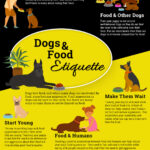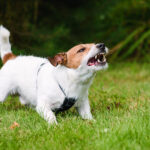Why Does My Dog Lick My Hand
Why Does My Dog Lick My Hand: The Surprising Reasons and Benefits
If you’re a dog owner, you’ve probably experienced your furry friend licking your hand at some point. Maybe you felt happy or confused or grossed out, depending on the context and your mood. But have you ever wondered why dogs do this behavior? Is it just a sign of affection or is there more to it? In this article, we’ll explore the science, psychology, and culture of dog licking and reveal some interesting facts that may change your perspective on this common canine habit.
Introduction: Licking as a Natural Behavior
Dogs are social animals that use various forms of communication to interact with their environment and other beings. One of the most versatile and intimate ways they express themselves is through their mouth, which serves not only as a tool for eating and drinking but also as a means of expressing emotions, bonding with others, exploring objects, and gathering information about their surroundings. Licking is one of the many oral behaviors that dogs exhibit throughout their lives, from birth to death. Puppies lick their mother’s nipples to stimulate milk flow and show submission; adult dogs lick each other’s faces, ears, genitals, and wounds to show respect, trust, affection, or healing properties; senior dogs may lick objects or people more often due to cognitive decline or sensory changes. However, when it comes to licking human hands specifically, there are several theories and observations that can shed light on the motivation behind this behavior.
Section 1: Why Do Dogs Lick Human Hands?
Subsection 1: The Sensory Appeal Theory
One hypothesis is that dogs are attracted to the taste, smell, texture, or warmth of human skin and sweat. Our hands contain natural oils that can be appealing to dogs’ sensitive noses and tongues. Additionally, our hands may carry traces of food particles or other substances that dogs find interesting or tasty. Furthermore, our hands may provide a source of comfort or security for dogs who seek physical contact with their owners. By licking our hands, dogs may be satisfying their sensory needs and expressing their desire for interaction.
Subsection 2: The Social Grooming Theory
Another theory is that dogs view us as part of their social group and use licking as a way to groom us, just like they would do with other dogs in the wild. Grooming serves several functions in dog society, such as promoting hygiene, strengthening bonds, reducing stress, and demonstrating trust. When dogs lick each other’s fur or skin, they remove dirt, parasites, dead cells, and excess moisture from the surface and stimulate blood flow and nerve receptors underneath. In addition, grooming releases endorphins in both the licker and the lickee, creating a positive association between the act and the feeling. Therefore, when dogs lick our hands, they may be trying to clean us up, show affection, and alleviate anxiety.
Subsection 3: The Learned Behavior Theory
A third explanation is that dogs learn to lick human hands through reinforcement or conditioning. If a dog licks your hand and you respond positively by petting or praising them, they may associate licking with reward and repeat the behavior in the future. On the other hand, if you react negatively by scolding or pushing them away, they may learn to avoid licking or feel confused about your reaction. Moreover, if other people in the dog’s life also allow or encourage hand licking, it can become a habitual response to human presence. Therefore, while some dogs may have innate tendencies to lick hands for various reasons, others may acquire this behavior through environmental factors.
Section 2: What Are the Benefits of Dog Licking?
Subsection 1: The Health Benefits of Dog Licking
Aside from being cute and funny at times (e.g., when your dog gives you a “kiss” on the face), dog licking can have some health benefits for both pets and humans. For example, saliva contains enzymes that can help break down food particles and prevent infection by killing bacteria or viruses. Therefore, if your dog licks your wounds or scratches, it may speed up the healing process and reduce the risk of infection. Furthermore, some studies suggest that exposure to dogs’ microbiota (the collection of microorganisms that live in their gut, mouth, skin, and feces) can improve human immune function and reduce allergies or asthma symptoms. Therefore, if your dog licks your hands or face occasionally, it may help boost your immune system in the long run.
Subsection 2: The Emotional Benefits of Dog Licking
In addition to physical benefits, dog licking can also have emotional benefits for both pets and humans. Research has shown that petting or interacting with dogs can lower stress levels, increase oxytocin (the “love hormone”) production, and improve mood and social skills. Therefore, if your dog licks your hands while you’re feeling anxious or sad, it may act as a form of therapy or comfort for you. Moreover, if you respond positively to your dog’s licking by talking to them, smiling at them, or playing with them, it may strengthen your bond and enhance your relationship over time.
Section 3: How Can You Manage Dog Licking?
Subsection 1: The Positive Reinforcement Method
If you don’t mind your dog licking your hand but want to make sure they’re doing it in a safe and controlled manner, you can use positive reinforcement training to encourage the behavior you like and discourage the behavior you don’t like. For example, when your dog licks your hand gently without biting or jumping up, you can say “Good boy/girl!” in a cheerful tone and give them a treat or toy as a reward. This will reinforce the connection between licking and positive outcomes in your dog’s mind. However, if your dog starts licking too hard, too often, or at inappropriate times (e.g., when you’re eating or working), you can say “No” firmly and redirect their attention to a more appropriate activity, such as sitting or lying down. This will teach them that licking has limits and consequences.
Subsection 2: The Alternative Behavior Method
If you don’t want your dog to lick your hand at all, you can use alternative behavior training to replace the licking with another action that satisfies their needs or desires. For example, when your dog approaches you and starts to lick your hand, you can offer them a chew toy or a ball to play with instead. This will redirect their energy and attention away from your hand and towards a more suitable object. Moreover, if you reward them for playing with the toy or fetching the ball, they may learn to prefer those activities over licking in the future.
Conclusion: Licking is a Two-Way Street
In conclusion, while there’s no single answer to why dogs lick human hands, it’s clear that this behavior can have multiple motivations and benefits depending on the context and the individual dog’s personality. Some dogs lick because they enjoy the sensory stimulation of human skin; some lick because they see us as part of their pack and want to groom us; some lick because they’ve learned that it gets them attention or rewards. Likewise, some humans appreciate being licked by their dogs as a sign of affection or loyalty; some tolerate it but don’t really like it; some dislike it due to hygiene concerns or personal preferences. Therefore, whether you let your dog lick your hand or not is ultimately up to you and your mutual understanding of each other’s needs and boundaries. As long as both parties are happy and healthy, licking can be a two-way street of communication and love. Woof!



